pascal
Latest
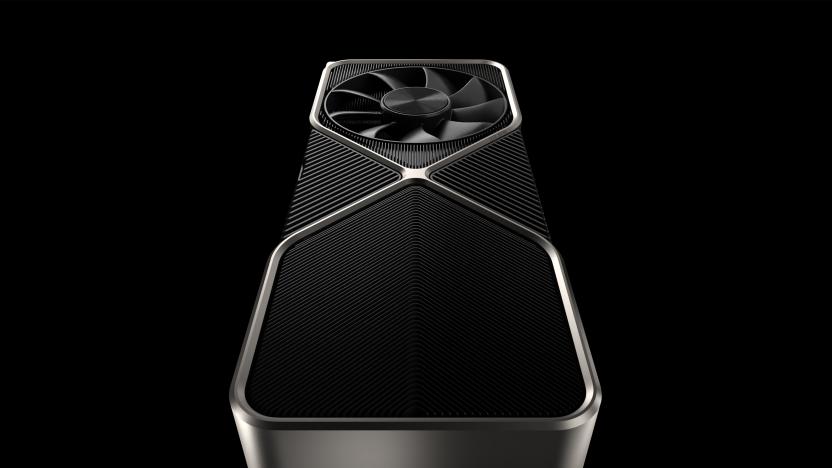
NVIDIA's RTX 3000 cards make counting teraflops pointless
With NVIDIA's first RTX 3000 cards arriving in weeks, you can expect reviews to give you a firm idea of Ampere performance soon. Even now, it feels safe to say that Ampere represents a monumental leap forward for PC gaming. However these cards stack up, though, it’s clear that their worth can no longer be represented by a singular figure like teraflops.
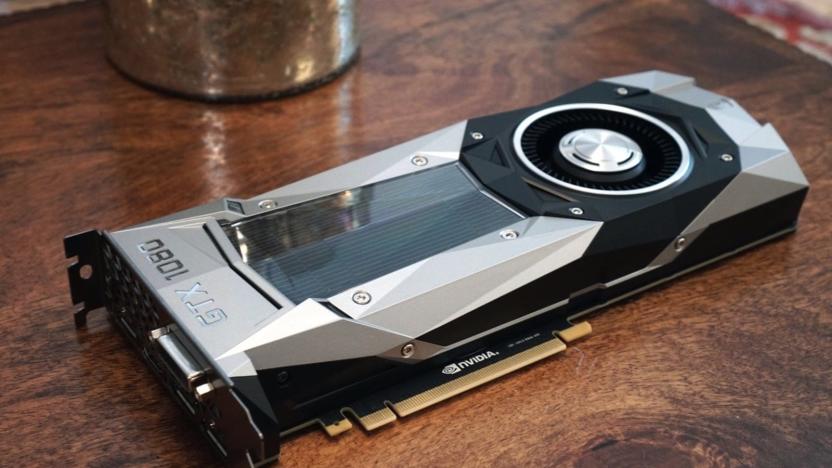
NVIDIA's ray tracing tech will soon run on older GTX cards
NVIDIA has announced that its ray-tracing tech, only available on its new RTX cards so far, is coming to its older GeForce GTX 10-series cards in April. The technology will work on GPUs from the GTX 1060 and up, albeit with some serious caveats. Some games like Battlefield V will run adequately at low settings, but other games, like the freshly released Metro Exodus, will run at just 18 fps at 1440p -- obviously an unplayable frame-rate.
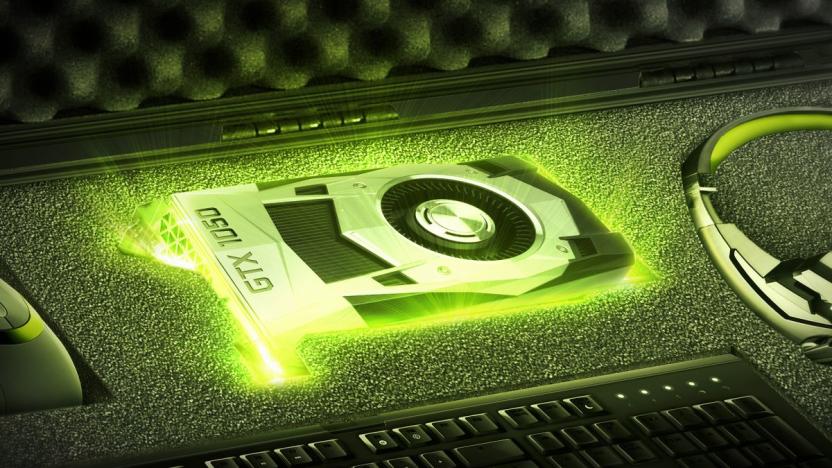
NVIDIA's budget GTX 1050 3GB is for gamers, not crypto-miners
Despite the looming arrival of its next-gen graphics cards, NVIDIA quietly unveiled a new budget model, the GeForce GTX 1050 3GB. It's positioned between the regular 2GB GTX 1050 and the 4GB 1050 Ti, with a faster base clock but lower memory bandwidth of 84 GB/second compared to 112 GB/s for the other two models. The 3GB of memory makes it suitable for modern games, but less desirable for crypto-mining, which (in the case of Ethereum) requires graphics cards with 3GB of VRAM at a minimum.
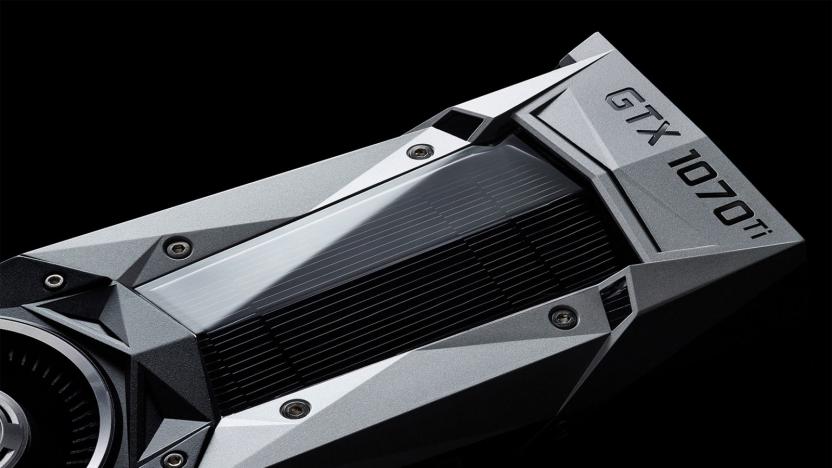
NVIDIA's GeForce GTX 1070 Ti battles AMD's latest video cards
NVIDIA has largely been sitting pretty since the GeForce 10-series arrived and gave it a comfortable performance lead in the graphics realm, but things have changed: AMD's Vega cards are at least fast enough that you might consider them instead. Needless to say, NVIDIA isn't about to let that situation stand. It's launching the GeForce GTX 1070 Ti, a $449 upper mid-range card that could outperform the $399 Vega 56 and undercut the $499 Vega 64 on price. For all intents and purposes, it's very nearly as powerful as a GTX 1080: you have the same core clock speed as the pricier board, and only slight hits to the CUDA core count (2,432 vs. 2,560), texture units (152 vs. 160) and boost clock (1,683MHz vs. 1,733MHz). About the only major difference is that you're still limited to 'just' GDDR5 memory instead of the speedier GDDR5X on the 1080.
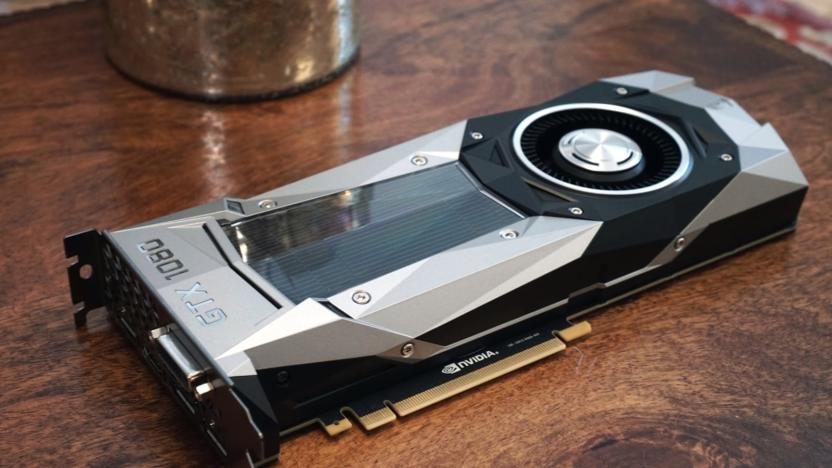
NVIDIA posts Mac drivers for its latest graphics cards
NVIDIA is quickly making good on its promise to support its latest graphics cards on Macs. The GPU giant has quietly posted beta macOS drivers (direct download) that should support any GeForce 10-series card, whether it's a simple GTX 1050 or an all-out beast like the Titan Xp. It's a big step forward for Mac users who've had to settle for 9-series cards at best. However, the big challenge will be making the most of the cards given the current Mac lineup -- this is as much an investment in the future as anything.
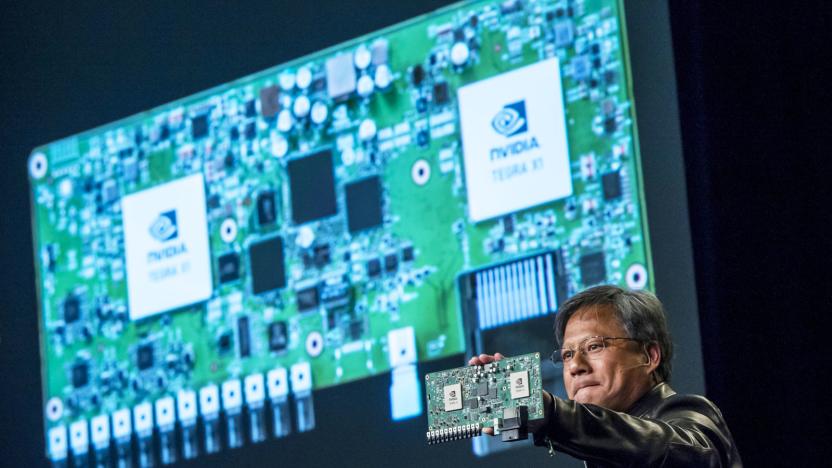
NVIDIA's made-for-autonomous-cars CPU is freaking powerful
NVIDIA debuted its Drive PX2 in-car supercomputer at CES in January, and now the company is showing off the Parker system on a chip powering it. The 256-core processor boasts up to 1.5 teraflops of juice for "deep learning-based self-driving AI cockpit systems," according to a post on NVIDIA's blog. That's in addition to 24 trillion deep learning operations per second it can churn out, too. For a perhaps more familiar touchpoint, NVIDIA says that Parker can also decode and encode 4K video streams running at 60FPS -- no easy feat on its own.
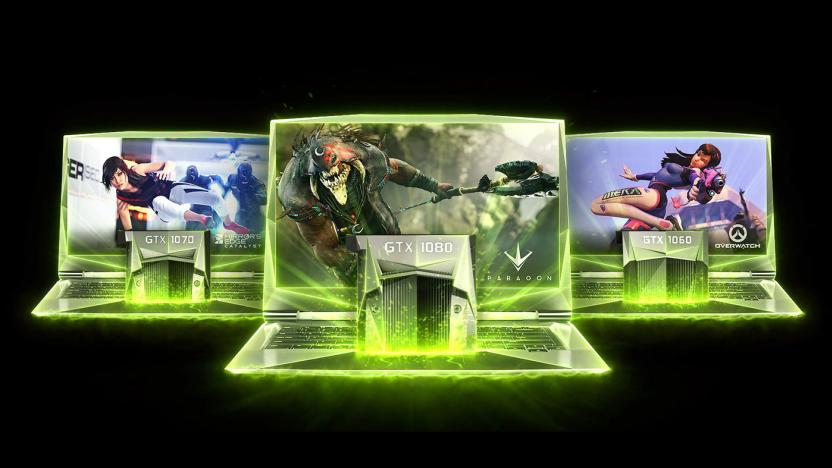
NVIDIA brings desktop-class graphics to laptops
With the GeForce GTX 1080, NVIDIA pushed the boundaries of what a $600 graphics card can do. That flagship card was joined by the GTX 1070 and GTX 1060, two lower-power cards based on the same 16nm Pascal architecture at a much more affordable price. Now, it's bringing mobile versions of those cards that match their desktop counterparts in almost every area -- including being VR ready. That's not hyperbole. The top-of-the-line laptop 1080 has 2,560 CUDA cores and 8GB of 10Gbps GDDR5x memory. The desktop chip has the same. The only difference is clock speed: it's set at 1,556MHz, while the desktop version is 1,607MHz. The two do share the same boost clock (1,733MHz) though, and both have access to all the new technology introduced for the Pascal architecture. That means simultaneous multi-projection, VRWorks, Ansel and the rest.

NVIDIA's latest pro video cards help you livestream VR video
Did you think NVIDIA's newest Titan X was a monster of a video card? You haven't seen anything yet. The GPU maker has unveiled its latest Quadro workstation cards, the Pascal-based P5000 and P6000, and they both pack power that makes your gaming-grade card seem modest. The P6000 (above) is billed as the fastest graphics card to date, and for good reason. It has even more processing cores than the Titan X (3,840 versus 3,584) and twice as much memory -- a whopping 24GB of RAM. The P5000 is closer to the GTX 1080 in performance with "just" 2,560 cores, but its 16GB of RAM handily bests the gaming card's 8GB. If you're working with massive amounts of 3D data, these are likely the boards you want.

NVIDIA's GTX 1080 GPU is faster than Titan X, lands May 27
NVIDIA gave us a taste of its new Pascal architecture with the P100 graphics card last month, which is aimed at servers for heavy duty computing. Now, it's ready to show off how that technology will be adapted for consumers with its new GeForce GTX 1080 GPU. As you'd expect, it's fast: NVIDIA CEO Jen-Hsun Huang revealed that it's faster than its current performance king, the $1,000 Titan X, as well as three times as power efficient. That's particularly impressive since it's the successor to NVIDIA's GTX 980, which retails for around $600.

NVIDIA's next-generation GPU is called Pascal, and it's smaller, faster and more efficient
What comes after Fermi, Kepler and Maxwell? Pascal, according to NVIDIA CEO Jen-Hsun Huang. That's the name of the company's next-generation GPU, and Huang says it'll be smaller, faster and more efficient, naturally. "As we compute more, we have to move more data around," he said, speaking at NVIDIA's GPU technology conference in San Jose today. "It's the data bottleneck." He's talking about how the speed at which data is exchanged between the CPU and GPU limits the processor's ability to perform. He's also talking about how NVIDIA hopes to solve the issue, introducing NVLink, a chip-to-chip communication technology (a new socket) that promises to outpace PCIe communication speeds by a factor of five (but up to 12). The company says the PCIe standard probably isn't going away, but is confident that its dedicated GPU socket will allow it to leapfrog existing bottlenecks. Although NVLink seems to be designed to speed up GPU and CPU communication, Huang says it also improves data transfer between GPUs -- meaning that graphics cards linked in SLI could see a performance boost, too.





